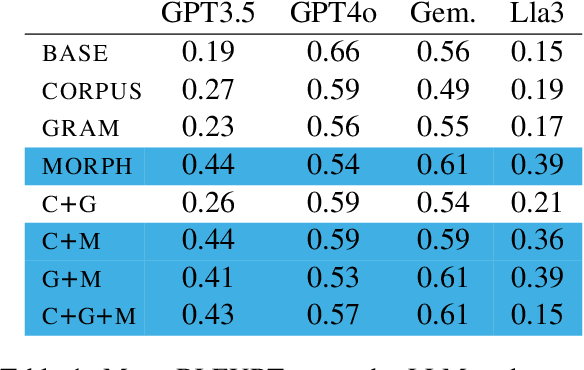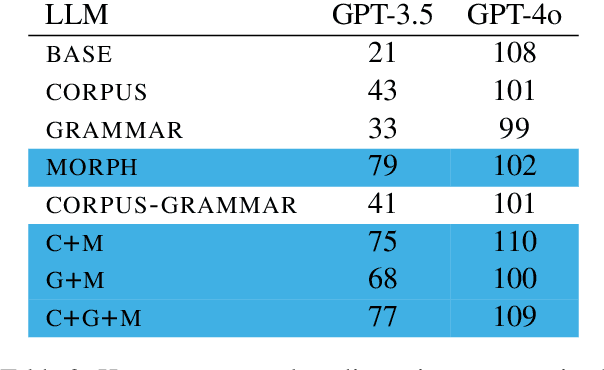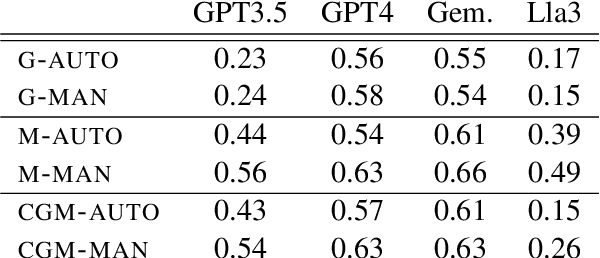Sara Court
Shortcomings of LLMs for Low-Resource Translation: Retrieval and Understanding are Both the Problem
Jun 21, 2024



Abstract:This work investigates the in-context learning abilities of pretrained large language models (LLMs) when instructed to translate text from a low-resource language into a high-resource language as part of an automated machine translation pipeline. We conduct a set of experiments translating Southern Quechua to Spanish and examine the informativity of various types of information retrieved from a constrained database of digitized pedagogical materials (dictionaries and grammar lessons) and parallel corpora. Using both automatic and human evaluation of model output, we conduct ablation studies that manipulate (1) context type (morpheme translations, grammar descriptions, and corpus examples), (2) retrieval methods (automated vs. manual), and (3) model type. Our results suggest that even relatively small LLMs are capable of utilizing prompt context for zero-shot low-resource translation when provided a minimally sufficient amount of relevant linguistic information. However, the variable effects of prompt type, retrieval method, model type, and language-specific factors highlight the limitations of using even the best LLMs as translation systems for the majority of the world's 7,000+ languages and their speakers.
Analogy in Contact: Modeling Maltese Plural Inflection
May 20, 2023Abstract:Maltese is often described as having a hybrid morphological system resulting from extensive contact between Semitic and Romance language varieties. Such a designation reflects an etymological divide as much as it does a larger tradition in the literature to consider concatenative and non-concatenative morphological patterns as distinct in the language architecture. Using a combination of computational modeling and information theoretic methods, we quantify the extent to which the phonology and etymology of a Maltese singular noun may predict the morphological process (affixal vs. templatic) as well as the specific plural allomorph (affix or template) relating a singular noun to its associated plural form(s) in the lexicon. The results indicate phonological pressures shape the organization of the Maltese lexicon with predictive power that extends beyond that of a word's etymology, in line with analogical theories of language change in contact.
 Add to Chrome
Add to Chrome Add to Firefox
Add to Firefox Add to Edge
Add to Edge